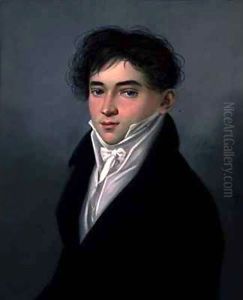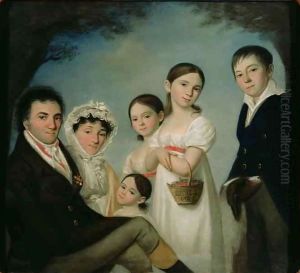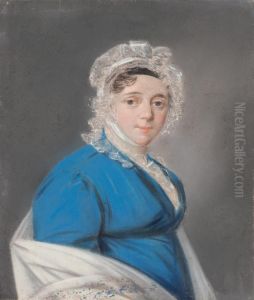Karl Wilhelm Bardou Paintings
Karl Wilhelm Bardou was a German artist known for his work as a portrait painter during the late 18th century. Born in 1750, Bardou spent much of his career in Berlin, where he developed his style and gained recognition for his artistic abilities. His life spanned a period of significant change in European art, with the late Baroque giving way to the influences of Neoclassicism.
Bardou's work was primarily focused on portraiture, an art form that flourished during his time as the bourgeoisie and aristocracy alike sought to have their likenesses captured for posterity. He was particularly skilled in the use of pastels, a medium that allows for delicate color transitions and was highly popular for its ability to render lifelike textures and tones, particularly in the representation of skin and fabrics.
Despite the fact that Bardou's name is not as widely recognized today as some of his contemporaries, his portraits were well-regarded by his patrons. His ability to capture the character and status of his subjects was noted, and he was adept at incorporating the fashion and aesthetic of the period into his work, making his paintings valuable documents of the era's cultural and social milieu.
Karl Wilhelm Bardou died in 1806, leaving behind a body of work that contributes to our understanding of portraiture of the late 18th century. Unfortunately, due to the limited documentation and scholarship on Bardou's life and the overshadowing fame of other artists of the period, detailed aspects of his biography, including his training and personal life, are not as well recorded. However, his existing portraits remain as a testament to his skill and the artistic trends of his time.


